In small and medium-sized manufacturing concerns, the receipt and inspection of materials are performed by the stores department or the storekeeper. However, in large manufacturing companies, a receiving department is usually set up. The receiving department performs the following functions: (i) Receives, unloads, and unpacks materials. (ii) Checks whether packages and their contents are intact. (iii) Verifies the quality, quantity, and other features of materials, ensuring they are consistent with the purchase order. (iv) Segregates defective materials from the lot by comparing the delivery note sent by the supplier to the copy of the purchase order. Any shortage or breakage of material is indicated along with the acknowledgment sent to the supplier for the receipt of material. (v) Passes on materials from the receiving clerk to the inspector for a thorough inspection of the materials received. (vi) Prepares the goods received note showing the details of the materials received. When the receiving department within an organization receives materials, the materials are unpacked and compared to the materials listed in the purchase order. If the materials are found to be in order, they are sent to the inspector for quality inspection. In turn, if the quality of the materials is acceptable, the inspector will prepare an inspection note to certify the quality. A specimen of the inspection note is given below. If the materials received are not consistent with the purchase order, or if they are deemed unfit for use, the inspecting staff rejects them for return to the supplier. For this purpose, a document known as a rejection note is prepared. A specimen of the rejection note is given below. This is the main book used for the purpose of store accounting. It keeps a date-wise record of the materials received in the stores. The material receipts book provides the following information: A specimen of the material receipts book is given below. Some manufacturing concerns prefer to keep a loose card known as a materials received note (or a goods received note). This note is serially numbered and dated, and it avoids the use of the material receipts book. The materials received note also replaces the daily receipt voucher. Although the materials received note avoids the use of the material receipts book, it is advisable to maintain this book since it is a prime book of store accounting and provides useful information. Normally, five copies of the materials received note are sent to the purchasing department, accounting department, stores department, and the department that initiated the purchase requisition. The last copy is kept by the receiving department for future reference. A specimen of the materials received note is given below. This report is prepared by the receiving section of the stores department. It is prepared after packages are opened and the comparison of actual materials received and materials ordered commences. Payment to the supplier must be adjusted according to this document. The proforma of this report is as follows:Receiving of Materials
Inspection Note
Specimen/Format of Inspection Note
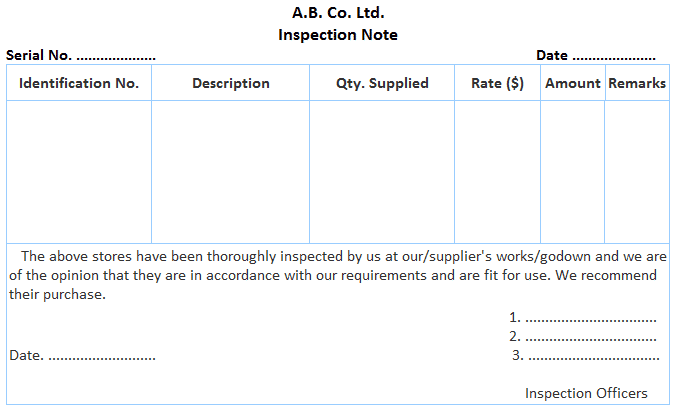
Rejection Note
Specimen/Format of Rejection Note
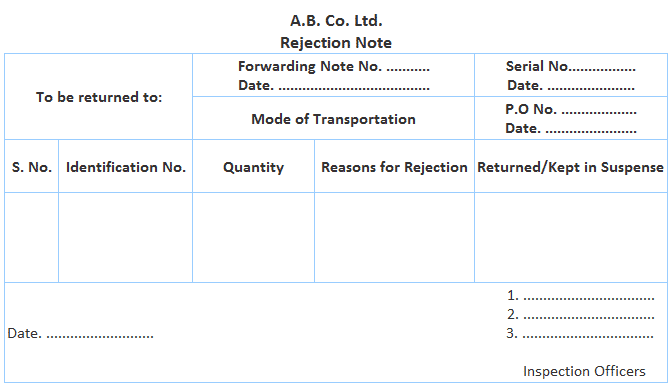
Material Receipts Book
Specimen/Format of Material Receipts Book
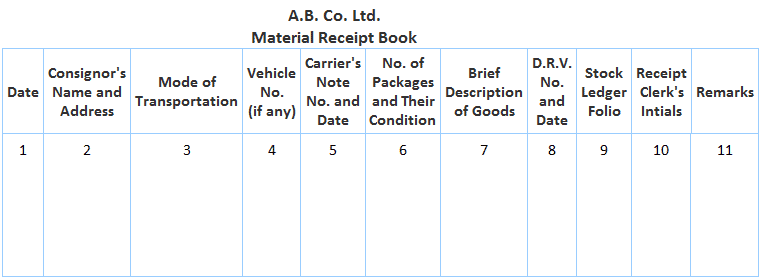
Materials Received Note or Goods Received Note
Specimen/Format of Materials Received Note
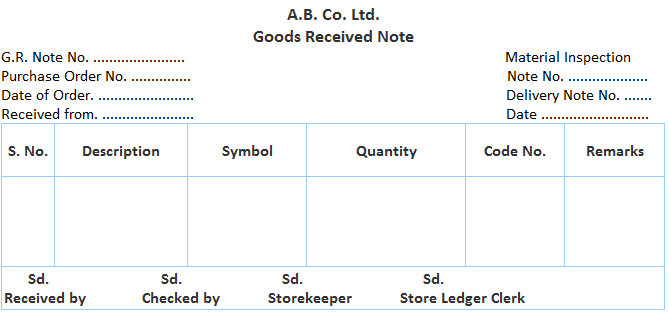
Damage/Shortage/Excess Report
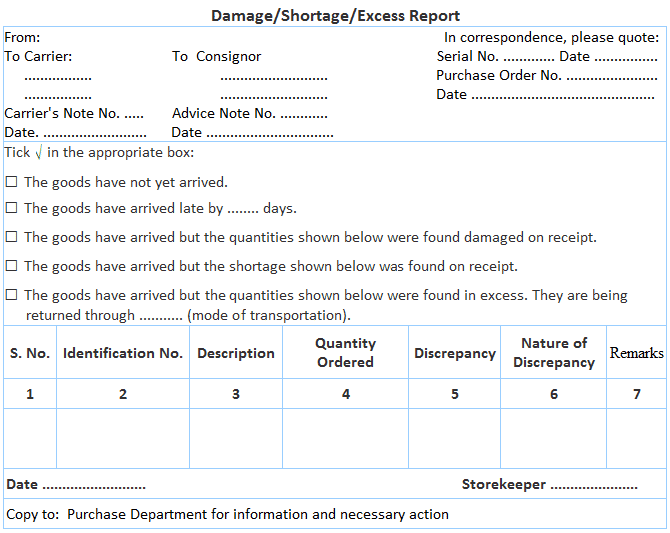
Receiving and Inspection of Materials FAQs
The role of the receiving department is to receive and inspect materials against the purchase order.
The documents prepared by the receiving department include the purchase order, delivery note, goods received note, inspection note, and rejection note.
The main book used for store accounting is the material receipts book.
The material receipts book provides the following information: supplier name and address, mode of transport, vehicle number, carrier's note number, date, number of packages, brief description of materials, daily receipt voucher number (drv no.), And date.
The purpose of the materials received note is to avoid the use of the material receipts book. However, it is advisable to maintain this book since it is a prime book of store accounting and provides useful information.
True Tamplin is a published author, public speaker, CEO of UpDigital, and founder of Finance Strategists.
True is a Certified Educator in Personal Finance (CEPF®), author of The Handy Financial Ratios Guide, a member of the Society for Advancing Business Editing and Writing, contributes to his financial education site, Finance Strategists, and has spoken to various financial communities such as the CFA Institute, as well as university students like his Alma mater, Biola University, where he received a bachelor of science in business and data analytics.
To learn more about True, visit his personal website or view his author profiles on Amazon, Nasdaq and Forbes.











